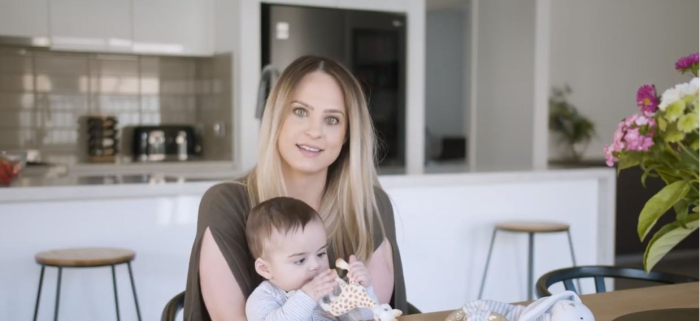Starting a family and the first few years of parenthood has a big impact on your time, energy and bank balance.
The costs of getting the house ready for your baby, childcare fees and all the other expenses that go with having another human in the house can stack up.
Rather than let this become overwhelming, we wanted to share some easy ways you can start to get that spending, and your budget, under control.
Knowing where you are with your money brings more peace of mind and it’s much better to face it head on, than stick your head in the sand.
The key to creating a family budget that you’ll stick to is to find a method that’s easy for you.
Whether that’s a spreadsheet, online tracker, a simple notebook or something else entirely, finding a way for you to plan and track your family’s spending can make a world of difference to your bank balance and peace of mind.
Our guide will help you to
- start setting goals
- track where your family is spending money
- identify where you can make savings
So, grab a notebook and pen and let the budgeting begin!
1. What money is coming in?
Write a list of all your regular income such as wages, investment income and benefits.
We’ll come back to this shortly.
2. What are you spending your money on?
Bills, bills, bills. Who knew that bringing up a baby could add to the list so quickly?
From one-off purchases to daily, weekly and monthly outgoings, write a list of everything your family has purchased or paid for in the past three months.
This might include:
- Baby and nursery equipment
- Medical costs
- Home loan or rent
- Utility bills
- Telephone and internet expenses
- TV and cable (and Netflix)
- Travel, petrol and car expenses
- Insurance – home, health and more
- Daycare and school fees
- Groceries
- Entertainment
The list goes on and the easiest way to do this is to print your last three bank statements and work through line by line.
Don’t forget cash purchases! If you regularly pay for things straight from your wallet, include these too. You might want to grab your latest receipts for reminders as to what you regularly spend.
The last three months is a good overview to ensure no expenses are missed that may have not fallen into just the last 30 days.
3. It’s time to track
Next, set up a spreadsheet in Excel or Google sheets.
You could do this in a paper planner or notebook instead but doing it in a spreadsheet can be much less time-consuming each month. You’ll also have the added benefit of being able to use formulas to total your income and outgoings.
Start with four columns – you’ll use these to track both your regular income and expenses throughout the month.
- Item (what is the income or expense for e.g. ‘Home Loan’)
- Provider (where is the money coming from or going to e.g. ‘Netflix’)
- Income (the monthly amount coming to you)
- Cost (the monthly cost you pay)
- Payment Date (the approx. date it will leave your account)
You might like to add extra columns such as account numbers and the corresponding bank accounts the money comes and goes from but let’s keep things simple for now.
Next, add a formula at the bottom to total your Income and Expenses.
Then add another formula to work out the difference between the two. We want to know how much you have left over at the end of each month.
This figure can be confronting but take comfort in knowing that this is the very first step in you taking control of your finances. Now you have a clear picture, at a glance, as to what is coming in and out of your accounts each month.
4. Spot potential savings
While you’re looking at your spreadsheet, can you see any areas of potentially reducing costs?
Perhaps you realise that you’ve been paying into a gym membership for months that you have no immediate plans to use.
Or is it time to reassess your family’s health insurance now that your family has grown? Perhaps you can stop paying for pregnancy cover now, if you feel that you no longer need it.
Take a little time to see where you might be able to cut some costs, if you need to.
5. Your family’s budget
Now you know exactly what you’re spending each month, you can start to plan your finances ahead of time, knowing exactly what is going in and out of your accounts.
You may like to add a column to your spreadsheet now for your Budget for each item.
This is the amount you expect to spend on each item every month so that you can plan for your future expenses.
For items such as Groceries and Entertainment, this Budget amount can also act as your goal to not go over which could help you make some big savings down the track by slowly reducing your spending where you can.
Tips for sticking to a family budget
This is how we suggest your stick to using your new budget every month:
1. Be consistent.
Set aside a time each month to sit down and track what your monthly income and outgoings have been. This might be a few days into the new month, when you can take 15 minutes to reflect on what’s happened financially in the month before. Add this monthly ‘meeting’ to your diary and set an alarm for it to repeat each month and notify you that it’s budget time!
2. Get the whole family involved
If you’re making changes to the way your family spends and saves, it’s important to get the whole family involved. Perhaps your partner, or children, have some suggestions on how you can all be a little more mindful of your spending. This is also a great opportunity to start educating your older children on the importance of being in control of their money.
3. Factor in the fun!
Many of us set a budget to be more aware of our spending and make savings for our families – two very valid reasons.
When it comes to planning our future spending, try to factor in some activities and events that your family will love too such as day trips, movie nights and weekends away. If your budget allows for it!
Tracking your monthly expenses will help you to feel much less overwhelmed and give you the power to plan what you can, and cannot afford.
Take the reins and be the CFO of your household spending!
Need help finding the right product for your child?
Our business hours are Mon-Fri, 8:30am - 5:00pm AEST.












